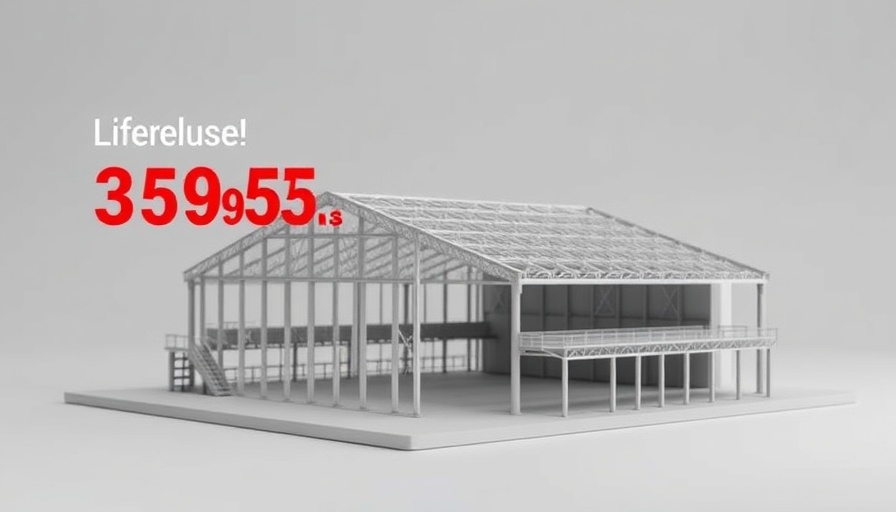
A New Era in Steel Building Construction
As the construction industry evolves, the trend of erecting red steel buildings continues to gain traction among professionals and suppliers alike. Day 1 of framing a new red steel structure marks a significant milestone as builders integrate innovative techniques with time-tested materials. This undertaking not only emphasizes efficiency and sustainability but also lays a solid foundation for modern construction projects.
Understanding Steel Building Foundations
At the heart of constructing a red steel building is the determination of the appropriate foundation. Various types of foundations are available, including slab-on-grade, strip footings, and pile foundations, each suited for different soil conditions and building requirements. For instance, if you're dealing with unstable ground, options like driven piles or bored piles might be necessary to ensure structural integrity.
The Framework: A Closer Look at Red Steel
Red steel buildings are engineered for strength and durability, often featuring I-beams and steel braced frames, which allow them to withstand adverse weather conditions and heavy loads. During the first day of construction, these steel components come together, demonstrating not just resilience, but also the innovative approach of linking I-beams for added stability. This setup has been shown to expedite construction, significantly reducing labor and material costs when compared to traditional wooden structures.
Future Predictions in Steel Construction
As technology advances, future predictions indicate that the use of red iron steel buildings will become even more mainstream in commercial construction. Enhanced insulation techniques, including spray foam and faced fiberglass, will further optimize energy efficiency, making these buildings environmentally friendly as well. The initial investment may be higher, but considering their longevity, the long-term benefits are clear. With a warranty of up to 50 years on structural integrity, red steel buildings offer not just a space but a lasting investment in infrastructure.
Final Thoughts on Steel Frame Construction
The trajectory of red steel frame buildings signifies a shift towards more advanced, sustainable, and durable construction practices. As professionals delve into the specifics of steel building construction, understanding the critical elements such as foundation types—whether it be a pad foundation or a mat foundation—will streamline projects from inception to completion. This focus on efficiency and sustainability is not just a trend but a promise for the future of construction.
 Add Row
Add Row  Add
Add 




Write A Comment